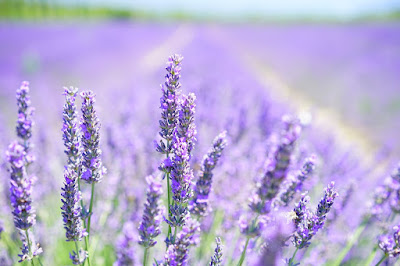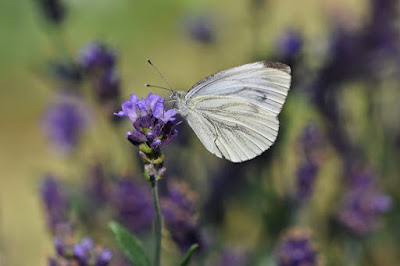Lavender, the aromatic herb with its enchanting appearance and captivating fragrance, has long held a special place in the hearts of people worldwide.
Amidst the din of the outside world, there is a plant that provides a calm sanctuary and a wonderful sensory encounter. The fragrant herb known for its alluring appearance and perfume, lavender, has long captivated people to it from all over the world.
Lavender is a perennial plant of to the Lavandula genus that adds a sense of elegance and tranquility to landscapes, farms, and gardens. With its picture-perfect spikes of lavender, blue, or purple blooms contrasted with its thin, grayish-green leaves, it makes an unforgettable image.
Lavender has a long history of culinary, medicinal, and fragrant purposes in addition to its decorative appeal. Lavender has provided practical benefits and a link to the comforting embrace of nature to humans for generations, from infusing culinary pleasures to reducing tension and anxiety through aromatherapy.
1. Appearance: Embracing Nature's Elegance
 |
| Lavender flowers |
The fragrant and visually striking herb known as lavender belongs to the genus Lavandula. Plants typically grow into perennial woody shrubs with many stems that can reach up to three feet in height, depending on the species and kind. This plant has lance-shaped leaves that are slightly fuzzy to the touch and have a gray or greenish-gray hue due to microscopic hairs coating them. Two vertical rows of leaves rest atop the stalks.
The blossoms of the lavender plant are its most appealing characteristic. Tender, thick spikes that shoot out from above foliage are two to eight inches long. The blossoms are lavender, blue, purple, and sometimes even white in color. Lavender's vivid blooms and distinct scent attract pollinators like bees and butterflies, making it a popular plant for gardens and landscapes worldwide.
2. Aroma: Unraveling the Soothing Scents
 |
| Lavender's specialized |
The aroma of lavender is its most prized quality. Specialized glands on the stems, leaves, and flowers of the plant release essential oils, which give the plant its unique and seductive scent. Lavender perfume has a nice, green scent with undertones of mint and camphor.
Aromatherapy and other relaxation techniques often employ lavender due to its peaceful and soothing perfume. Inhaling the perfume promotes calmness and increases mental control, while also easing tension and promoting better sleep.
3. Cultivation: Nurturing Lavender with Love
 |
| Lavender Nurturing |
Around the world, lavender is grown in a wide range of temperatures, including temperate and Mediterranean regions. Plants thrive in well-draining soil with a pH between 6.7 and 7.3. Lavender requires six to eight hours of direct sunlight per day to grow and bloom to the best of its ability. Lavender should be grown in raised beds or containers in regions with colder winters to provide for drainage and to prevent the roots from being overly damp.
Lavender typically requires little care once planted. Because of its drought resistance and minimal watering requirements, it flourishes in desert settings. After flowering, trimming keeps the plant in shape and promotes new growth for the upcoming growing season.
4. Culinary Use: Lavender's Gastronomic Delights
 |
| Lavender flowers |
Edible lavender blossoms have made their appearance in culinary uses. Lavender has a strong flavor that might overshadow a dish, therefore it must be used carefully when cooking. The flowers are frequently used to give baked foods, beverages, and desserts a distinctively floral and somewhat sweet flavor. Popular culinary concoctions include sugar, honey, and vinegar flavored with lavender.
Lavender is frequently utilized in cooking, as shown in the creation of lavender-infused shortbread cookies, ice cream, lemonade, and beverages. Lavender's culinary applications are diverse throughout nations and cuisines, demonstrating its adaptability in the kitchen.
5. Medicinal Properties: Nature's Healing
 |
| Medicinal properties |
Traditional medicine use lavender for a variety of medical purposes. The two components of lavender essential oil that are known to be beneficial are linalool and linalyl acetate.
Lavender's pharmacological qualities promote relaxation and lessen tension and anxiety. Because it lowers nervous system activity, lavender essential oil is thought to have anxiolytic qualities, which help people relax and feel less agitated.
Lavender oil is used topically to relieve minor skin irritations like burns and bug bites because of its antibacterial and anti-inflammatory qualities, in addition to its relaxing benefits. But before putting the oil to the skin, it must be adequately diluted.
Lavender oil is frequently diffused or used with massage oils in aromatherapy to promote relaxation, enhance the quality of sleep, and relieve headaches.
6. Aromatherapy: Harnessing Lavender's Therapeutic Power
 |
| lavender essential oil |
A comprehensive therapeutic technique that improves both physical and emotional health is aromatherapy. Aromatherapy perfumes include lavender among their organic essential oils. Lavender is one of the most often used essential oils in aromatherapy due to its soothing and relaxing properties.
Diffusers and oil burners are two tools used in aromatherapy sessions to add lavender essential oil to the atmosphere. Scent molecules engage with the olfactory system through inhalation. This system is intimately linked to the limbic system of the brain, which controls mood, emotions, and memory.
Certain individuals assert that the calming scent of lavender aids in lowering stress and anxiety, promoting calmness, and enhancing sleep quality. It's a popular option for people looking for all-natural remedies for problems like stress and sleeplessness.
7. Lavender Products: Beauty, Wellness, and Beyond
 |
| Lavender-infused products. |
Due to the plant's immense popularity, lavender extract is now found in a wide range of items. These items are utilized in domestic goods, cosmetics, and medical applications in addition to cookery.
Lavender is a popular component in soaps, lotions, shampoos, and conditioners because of its potentially health benefits and calming aroma. Because they contribute to the creation of pleasing and relaxing scents, essential oils are frequently used as aroma ingredients in perfumes and colognes.
In addition, lavender can be added to potpourri mixes, linen sprays, scented candles, room sprays, and other household items to infuse homes with the calming aroma of lavender. These goods are enticing because lavender is associated with relaxation and well-being.
8. Symbolism: Lavender's Language of the Soul
 |
| Lavender across cultures |
Throughout history and culture, lavender has been associated with metaphorical meanings. It is typically connected to commitment, serenity, and purity. Lavender was originally a sign of love and loyalty and was used in religious ceremonies. Lavender was once utilized as a floor decoration in homes and temples by people of many different cultures to create a calming, spiritual ambiance.
The plant's magnificent beauty and soothing perfume make it a favorite choice for conveying words of gratitude, love, and friendship. Bouquets and arrangements of lavender are frequently offered as expressions of love or best wishes.
9. Insect Repellent: Nature's Guardian in Purple
 |
| Natural insect repellent |
Lavender is used in cooking, medicine, and fragrance, among other things. It works as a natural bug deterrent as well. It is often recognized that the strong scent of lavender, particularly in its essential oil form, deters a wide range of insects, such as moths, fleas, flies, and mosquitoes.
For centuries, people have used dried lavender flowers in sachets and piled among linens to keep moths away and give clothes and beds a beautiful aroma. Lavender oil is often mixed with carrier oils and applied topically as a natural insect repellant, replacing chemical-based repellents.
Adding lavender to your natural pest control strategy can help keep pests away from your yard's surrounding plants.
In conclusion
Lavender, with its captivating appearance, soothing aroma, and versatile uses, remains a cherished and beloved plant worldwide. Its slender leaves and beautiful, colorful spikes make it a popular choice for gardens and landscapes. The delightful fragrance of its flowers is celebrated for its calming effects and therapeutic benefits in aromatherapy.
From culinary delights to medicinal properties, lavender continues to play a significant role in various aspects of human life. Additionally, its symbolic meanings and natural insect-repelling properties further enhance its appeal. Lavender's enduring popularity is a testament to its timeless charm and enduring place in our hearts and homes.
Are you ready to begin growing lavender plants? Follow us for more gardening advice and plant-growing suggestions. Please share this post with other enthusiasts and subscribe to our blog and social media networks.










Join the conversation